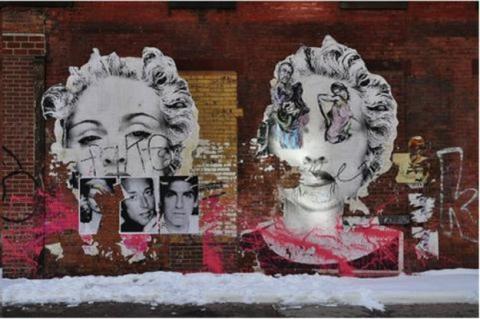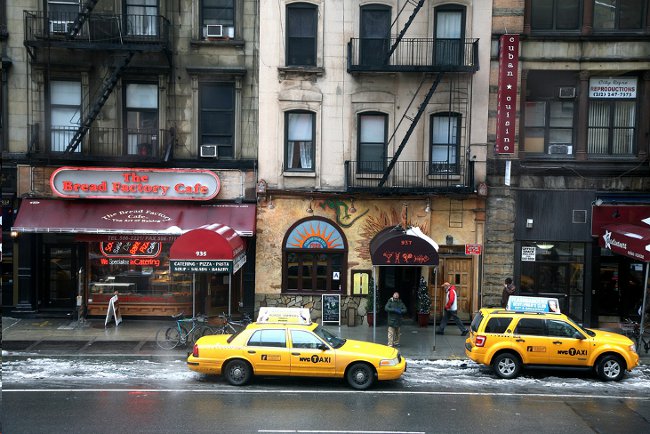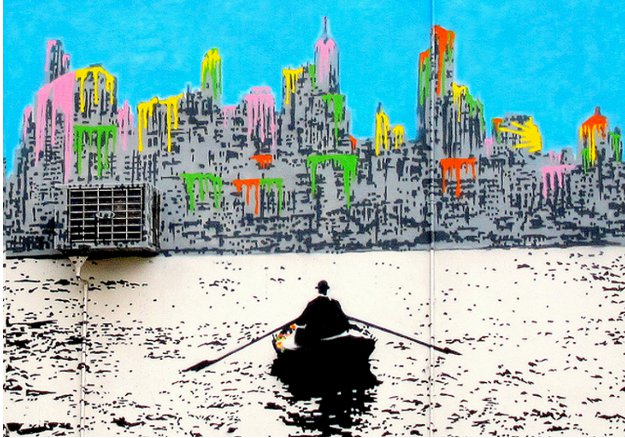Wherefore Art Thou, Bohemia?

As a glimpse at a local gallery or a visit to a local poetry reading will remind anyone, creating first-rate art is not easy. So, inevitably, aspiring young artists look for environments that will be conducive to creativity. The ideal situation is one where creative labor is maximized, and working a real job is minimized. It is that beautiful utopia: Bohemia. Montmartre in the 20s, the East Village in the 60s. But the economic crisis has made that sort of lifestyle harder to pull off just about everywhere, particularly in New York City. Traditionally, the city is a place that is synonymous with avant-garde culture.
Although the use of “bohemian” in English first came about in the 19th century, the rise of the novel in the century before is an important part of the story. Today, a coming-of-age narrative or a bildungsroman almost always includes a time when the young protagonist seeks refuge in a bohemian lifestyle that allows them to figure out who they are. Initially, in the early German conceptions of the genre, by the conclusion of the story, the protagonist was accepted back into their culture. Somewhere during the mid-late 19th century, with those mad prophets of modernism- Dostoyevsky, Rimbaud, etc.- that formula started to change, culminating in the fragmented, isolated literary figure that we are left with today.
How, the cultural logic goes, does the individual maintain a sense of self, an identity, in the modern nation-state? Sloth, as Thomas Pynchon described in a rare non-fiction essay on that deadly sin, is one way that resistance could take place. And what is more slothful, in a capitalist society, than that filthy bohemian who, erratic and unruly, wishes to spend their working life creating and thinking rather than toiling away at a 9-5 job?
Squalor, however, has become increasingly removed from the popular conception of bohemia. Now, we often think of neat, priggish young people chowing down on overpriced vegan food instead of a dirty, broke Henry Miller running around Paris, shaving his friend’s armpits (how ironic that Miller was born in the playground of those clean-cut young people, Williamsburg, Brooklyn).

Thomas Chatterton, describing how Paris has changed in a New York Times article, writes, “We should be grateful to be jolted from our anesthetized routines, confronted when we can be with surroundings and neighbors that are not injection-molded to the contours of our own bobo predilections.” And that terrible g word- gentrification- seems all too responsible for this change. What has happened to the filth, the poverty that often accompanied young artists? Is there something valuable to be said about the loss of so-called pure bohemian ideal, or is a lot of this conversation simply nostalgia of the kind Woody Allen showed us in Midnight in Paris? Meanwhile, the contemporary counterculture (this term is best used with a touch of irony as it has the capability of being morbidly misleading) continues to dawdle in that great postwar youth cultural myth: that fighting the man is as easy to do as buying a shirt.
The most ironic part about young creative types desperately seeking “the” place to be is that that desire is a wholly suburban one: the fear of missing out. Suburbia, the sworn enemy of the contemporary hipster, is the source of a great paradox. There’s a reason that indolent, overfed Internet trolls often repeat insults like “Everyone who wasn’t cool in high school moved to Williamsburg.”
The sad truth is that in a market economy, we have no choice to compete, and you could bet that young, hip people are competing too, no matter how much they pretend that they’re not. The difference between the derisive term “hipster” and an artist is that the latter actually creates, while the former is a mere imitator, a cultural hack. If living the bohemian lifestyle is about creating, than it would be reductive to dismiss the crusty guy selling newspaper clip art outside of Prospect Park on principle. Dismiss him for making crappy art, sure. True, Hemingway and Baldwin probably benefited from the community of artists that they interacted with, but Emily Dickinson never left her room. Where you are might not hurt, but it might not help much either. What you do matters more.

Moving to smaller cities may be a wise option for young artists, but it might also be dangerous to think that those places are isolated from the same processes of gentrification in New York, London, Paris, and elsewhere. A lot of this has to do with the eroding middle class, and where else do many creative types- wealthy enough to be educated but not enough to be free of financial insecurity- come from? Detroit might make it easier to pursue sculpting, but it won’t make it easier to escape global, economic trends, or, for that matter, the moral dilemmas that accompany them (that is, of being an agent in the process of gentrification). However, it seems that at our current moment, New York is no longer the place to be. Art demands time, and time is money.
For all of its ambitious, talented DIYers and art enthusiasts alike, no honest person would argue that contemporary Brooklyn is overflowing with revolutionary art. And maybe nowhere else is either… Ask any New Yorker about the topic, and most defenses of the city as an affordable place for young people to live come across as rationalizations as opposed to well-developed arguments grounded in reality.

A character from Noah Baumbach’s Frances Ha (2012) puts it simply: “Only rich people can afford to be artists in New York.” The loss of a true Bohemia in New York is surely a great one, and though remnants may still exist in small, albeit pleasing, ways, for now, let’s not allow the mourning to ruin the rise of another place for the young and listless to find themselves. Unless you’re rich, it’s time to find another city. And that may not be a bad solution, but it’s not that simple, either. Writing about Paris (which has undergone gentrification processes not so different from NYC) Chatterton concludes: “The sad truth of our contemporary moment seems to be only that you no longer need to be anywhere in particular anymore… The brunch is all the same.” Let’s hope, for the sake of art, that, at least in some places, the brunch is cheap.”
Highbrow Magazine






























































































































































































































































































































